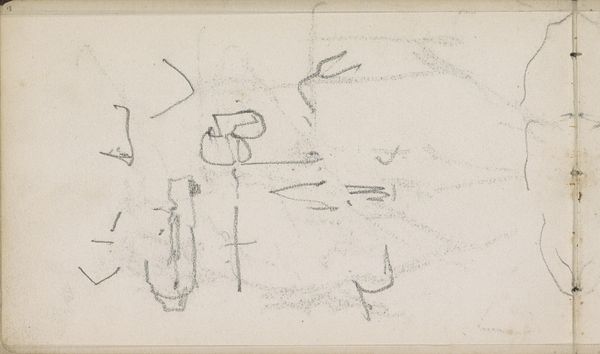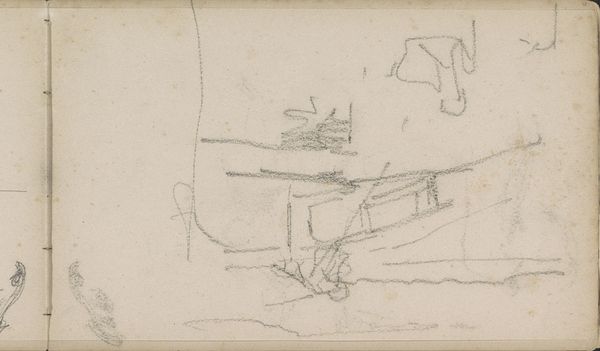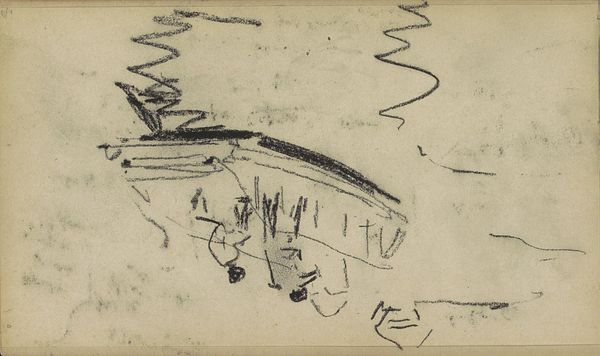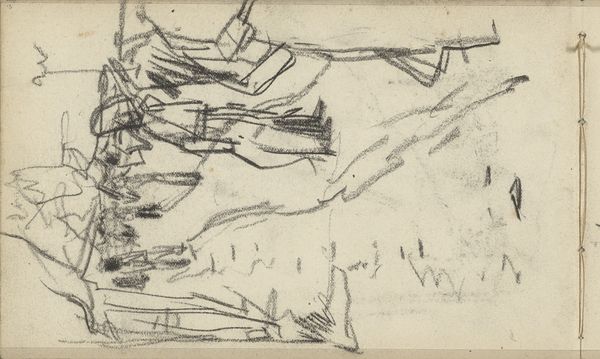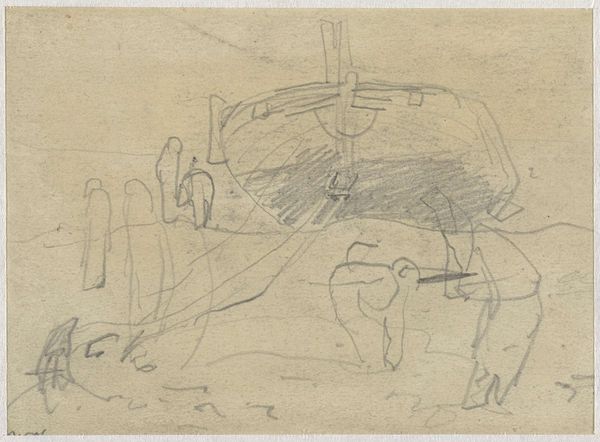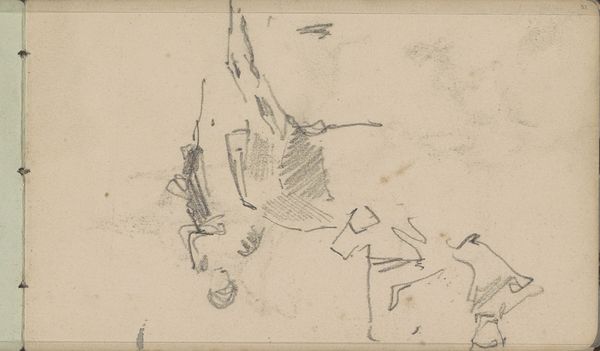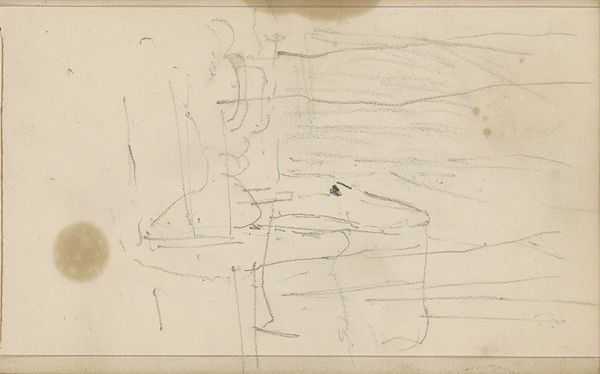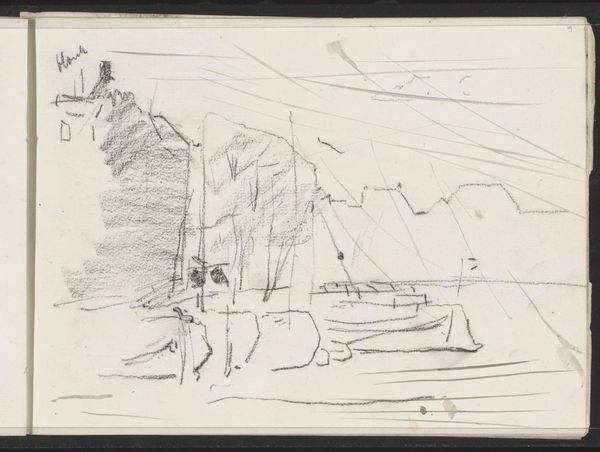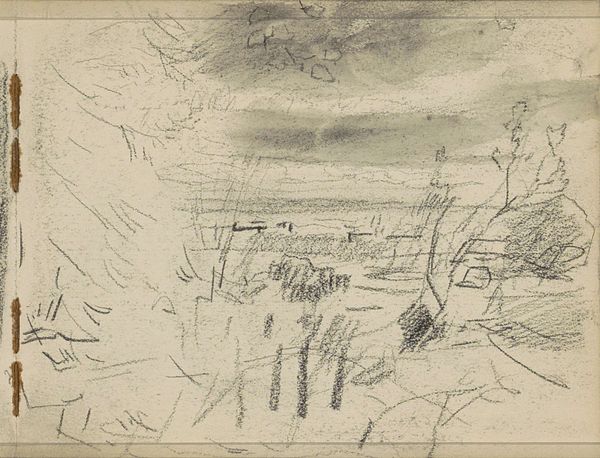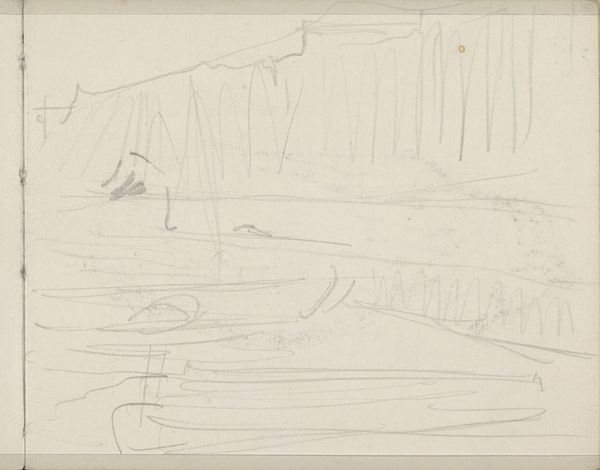
drawing, pencil
#
drawing
#
impressionism
#
landscape
#
pencil
Copyright: Rijks Museum: Open Domain
Curator: Looking at this evocative piece by George Hendrik Breitner, "Landscape with Farmhouse and Two Male Heads," created between 1881 and 1883. It’s currently held here at the Rijksmuseum. Editor: It's really quite raw, isn't it? Almost feels like a fleeting thought captured in graphite. There's a sparseness that conveys a sort of stark, quiet isolation. Curator: Exactly! Breitner's rapid pencil strokes hint at a working process, the quick, efficient capturing of a scene. I am drawn to how he used a simple pencil on paper; a relatively inexpensive medium accessible to many. Editor: Well, the choice of such readily available materials undoubtedly played into Breitner’s access. And consider the societal pressures, and how the Impressionists disrupted established hierarchies. It would allow for a broader accessibility to the art world than previously conceived. What can we infer from the fact it’s a landscape, as a common theme for example? Curator: True, but what impresses me more is how he extracts so much from so little. See the variation in the weight of the lines. In addition to the broad, expressive strokes of the landscape, you also have details such as the faint but discernable figures. Editor: Figures reduced to nearly abstract forms. It strikes me, however, the degree to which the art world and burgeoning gallery scene cultivated certain styles. Did such social-political influences permit more space for impressionist, on-location art, rather than polished studio creations? Curator: Definitely, although the Impressionists were responding to multiple shifts – social, technological with paint production advances, and economic conditions for a rising middle class. All this allowed for new art and subjects to exist and be bought. The sketchbook format contributes too to this sense of it being "real" life on the go. Editor: An unfinished state in many ways… reflecting a socio-cultural fascination with immediate sensory experiences and art’s new democratized function within society? But I do feel Breitner manages to show the mood of his time through minimal means. Curator: Indeed! The convergence of rapid urban development and interest in daily life of Dutch culture, it's all there in a humble pencil drawing. The sketch gives the sense of industry. Editor: A remarkable artifact. By considering the social climate that embraced Impressionism and a wider range of art, one may learn to understand better art. Curator: Yes, and that understanding becomes clearer when also appreciating the artistic intent, choices of materials, and skill brought together to render even a seemingly quick sketch impactful.
Comments
No comments
Be the first to comment and join the conversation on the ultimate creative platform.
